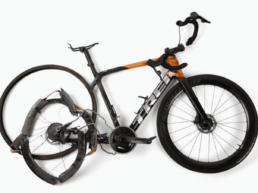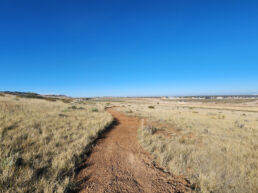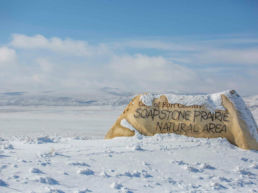
By now you’ve probably read the email and blog post (or most of it) from BRAC with regards to racer and race promoter concerns over some BRAC policies especially; fees, race day schedules, cup requirements and general lack of value. Below you will find the reply from race promoters that held a closed door meeting last week. You’ll also find the original email and blog posts from BRAC further down.
Response from local race promoters
Dear Colorado racers, promoters and clubs,
We felt that we should respond to the recent blog posts from the leadership of Bicycle Racing Association of Colorado (BRAC) to ensure the race community is apprised of the position of a group of local race promoters, promoting clubs and current BRAC member clubs. We have had a meeting and multiple discussions about the current situation of racing in Colorado. Our major concern is the cost to produce a race as well as the improvement in the quality of the race day experience for participants.
It is important to distinguish between our concerns about the costs and the desire for large profits as was claimed by BRAC. In order to sustain a challenging and full race calendar, putting on a race has to be financially viable. Promoters in Colorado pay a $2.50 surcharge to BRAC and $3.60 to USAC per racer. The USAC surcharge covers critical insurance as well as administrative costs of running a national organization. Along with the $2.50 surcharge, BRAC has a myriad of other fees to support itself. The $2.50 “surcharge” previously covered racer insurance when BRAC was operating outside of USAC, but now that is covered by USA Cycling. In evaluation we found that we are not receiving anything more substantial than other local associations. We do pay for a large staff budget, and while we have no issues with the staff at all, our issue is why do we need $100,000 in staff payroll costs while the rest of the country does not? Again, what are we paying for?
BRAC Profit/Loss end of 2014:
http://www.coloradocycling.org/sites/default/files/Site_Files/BOD/Accounting_Reports/12-2014_p_l.pdf
BRAC
2014 annual revenue: $265,271
Payroll: $105,527
Estimated membership: 3209 (current count)
Arizona
Average annual revenue: $14,500
Payroll: $300/month for Administrator
Estimated membership: 1,114
Texas
Average annual revenue: $55,000
Payroll: Stipend for upgrade and some other coordinators. Less than $1000
Estimated membership: 2,800
New York
Average annual revenue: $29,000
Payroll: waiting on feedback
Estimated membership: 2,700
Northern California/ Northern Nevada
Average annual revenue: $95,000
Payroll: 9 contract administrators $37,449 in 2014
Estimated membership: 3,885
Florida
Average annual revenue: $20,000
Payroll: $0
Estimated membership: 1,504
New England
Average annual revenue: $31,000
Payroll: waiting on feedback
Estimated membership: 3,554
On other topics:
Almost every Local Association (LA) in the country believes it has too many categories. An LA needs to represent the categories in the demographic of racers it represents without mandating the makeup of a race day. We believe there are major disadvantages to the current BAR/BAT competitions. If there are 2 races on a weekend and one is a cup race and the other is not, a majority of racers will pick the cup race. This forces nearly every race to gain cup status hoping that will guarantee participation. To meet standards of BRAC BAR/BAT status a promoter has to work within the confines of limited time which forces the reduction of race length for some categories, the elimination of some categories and an adverse combination of fields. BRACs myopic focus on BAR/BAT forces a lack of creativity at the grassroots level of race promotion.
The race kit is a selling point for BRAC that may have value to some promoters. We will leave that up to promoters to decide. In our meeting, the value of the race kit was not of much importance. The value of “free” race numbers was not of much importance. Numbers can be ordered online at very competitive prices and in many cases the cost can be traded for advertising space.
The list goes on but essentially in our review we have determined only two benefits from BRAC: the promoter meetings to hash out the schedule and the Yvonne’s expertise in administration.
BRAC has vowed in the past to make organizational changes. The only significant change that has been made is an increase in salaries. Rather than jumping ahead of a discussion to put forth an attack on our group of promoters, BRAC should reflect on what changes can be made to resolve the discrepancies and to look to the members to ask what they want to see.
Sincerely,
90% of your cross season and about 70% of road (and growing)
Email from the ED
Well, this is not going to be your typical upbeat, rah rah sort of article. There is some serious, um, stuff going on behind the scenes that you should know about because ultimately it affects you. One of the difficulties that the BRAC staff and Board of Directors has had to face for years is the often diverging interests of our two most important constituencies — riders and race directors. While there is some overlap, there seems to be a growing schism between what these two groups want. If I am a racer, then my perfect world involves having great courses, low entry fees, high prize values, fair races against my peers, separate races for me and my category, age, or age/category combination, and a fighting chance to do well, or at least not get my ass blown off. If I am a race director, then I want to put whatever categories on that I want, I want to put the race anywhere on the calendar that I want, I want to charge whatever I want and not have to give any of it to USA Cycling or BRAC, I want to do it all without interference from same, and I want lots of riders to show up so I make money, and lots of it. I’ve been a racer. I’ve been a race director. All those things were concerns of mine when I was fulfilling those roles.
Unfortunately, for the entire time I have been in the sport, which is over 40 years, many in these two sets of desires have conflicted. Our sport and our cycling culture have evolved over time in an attempt to balance the two for the good of all. I have only been here at BRAC a year, but as I entered I saw how hard Clint and Boups worked to create the “perfect” cup system, including the yellow/blue criterium days, and everything involved in that. Colorado developed the concept of the 40+ cat 3 class. Why did they do all that? Because you, the racers, were showing us with your choice of racing days that you wanted a fair chance to race against your biological peers. The two of them plus a special committee spent days, nay months, working on that trying to develop the best cup policy that would give all the age/gender/category groups what they asked for. Unfortunately, that placed a heavy burden on race directors who would prefer shorter days, fewer starts, and bigger fields, all of which maximize their profits and minimize their expenses, but if they did not run 26 categories, they could not be a gold race, or in some cases could not even be a cup race. Makes sense, no? My last two years at USAC, we were moving to more of a “free market” mentality, figuring our capitalist society would make it all work out in the end. There was even discussion of not allowing the local associations to control calendars at all, essentially giving anyone a permit for any day they wanted, even if that meant five races on the same day all within 10 miles.
But, we see danger looming on the horizon. This is the same danger that led previous administrations to work out previous cup policies. If we remove all restrictions, then soon all races will have the big fields that generate the most money. The cat 4 races, the cat 3 races. Maybe the masters men 40+ open, and the elite women. The little juniors will disappear, except for a few passionate race directors who will host it out of love. Older masters will be lumped with younger masters. Category-divided women will all ride with the pro/1/2. As of now, nobody, us included, has come up with the perfect way to blend all these issues. How do we give the racers what they want and also not overly burden the race directors with restrictions? We are making progress. We are changing the cup to allow more combinations to reduce the number of starts yet still have the 26 race groups represented and scored. This will also shorten the racing day for those who have to be up at the crack of dawn. It will reduce expenses and infrastructure. And we are hoping it will stimulate more road racing. And it is just a start!
Unfortunately, there are those who do not want to give us the chance to finish this part of the evolution. There are race directors who have gone to USA Cycling and begun petitioning to let them form their own Local Association to take over cycling in Colorado. These same people just this week held a semi-secret meeting to discuss several issues, including replacing BRAC, seceding from BRAC, or joining the new organization, NACS, that is starting up to provide other outlets for grassroots cycling. Their complaints really boil down to two — surcharges and schedule. They feel that the operational surcharges that the riders pay are actually theirs and they should get to keep the money. They also feel that BRAC should not try to legislate when their races are nor what categories they offer. All valid concerns. All are concerns we have spoken about as a board and staff. All are issues that we are already working on. It is unfortunate that on the eve of one of the greatest days we have as BRAC, the Road Cup Awards Party, this is the type of thing we are dealing with. It is unfortunate that secret meetings were held and secret conversations with USA Cycling rather than dealing with BRAC directly. We are not hiding. We are pretty easy to find and talk to. We are your servants in cycling.
For more background and opinions on this topic, please read President Doug’s current blog. It is pretty thorough, and admittedly fairly long, but considering what is going on, it is important to read. Also, whether you are engaged in the party tomorrow or the meetings coming up in the next month (and we hope you are), please stay tuned and stay alert. You may be making decisions that will affect the course of cycling in Colorado for years to come. The Club Council meeting is on December 6th. If you did not know, the Club Council is the ultimate authority at BRAC. They elect the BOD. They approve bylaws and the budget. Talk to your club president. Find out who is going to the meeting and what the issues are. Make sure your delegates hear your voice.
Thanks for listening. It has been an interesting first year. I hope to see you at the party tomorrow.
Blog Post from the BRAC President
It’s probably time that the kids learn there’s no Santa. Hate to break it to you, but what I’m about to say may come as a shock.
We have a little issue here with some folks not truly understanding, or looking, at the broader scope of the current racing scene in Colorado. Race Directors are complaining, still, about how there are too many categories and that we need to get rid of them. I also hear complaints about the fees that are charged by BRAC to Race Directors who feel the value isn’t there. The fees, FYI, are $2.50 per racer per day (although we have them scheduled to drop to $2.00 in 2016), and it’s a surcharge that the racer pays.
The complaint about too many categories also dovetails into their complaint that BRAC is micromanaging the RD’s and forcing them to comply with a burdensome schedule that is unreasonable. You’ll hear this referred to as Cup Status a lot. The thing that I do not grasp is that if any RD wants to hold a race and run only 3 categories, they can. They will still get the benefits and swag; they just will not be a Cup Race. That is totally in their power, they can do it and hold any kind of race they want, and BRAC will support that, and give them the same benefits that any BRAC race gets.
Knowing that, the challenge is that they have learned that you, the consumer, like the Cup thing and tend to focus on those races that qualify. Not sure what to say, but this is kind of a market driven sport, and racers vote with their race dollars. RD’s are free to produce a product that the market wants, or not. BRAC supports them either way, so don’t blame the Association for that.
Nevertheless, you cannot let the pendulum swing too far in the “Market Driven” direction. We have the Cup policy for a reason: we want to grow the entire sport of racing, not just the big groups like Masters and SM 4’s. By setting the Cup policy such that every race is well represented, we can make sure that the smaller categories like Juniors and Women are protected. If you go to a strict marketplace decision, then the RD’s are going to dump the small groups and just focus on the large, profitable ones. This is not a healthy way to go for racing in the long term, and is definitely not part of the culture of cycling.
But you have got to also understand that the complaint about too many categories is valid and not to be ignored. Some venues cannot run all these different cats and survive a day; they don’t have enough time. Racers have also demanded to race against their peers and when their race isn’t offered, they skip it. Yes, we joke about how everyone wants a ribbon and everyone wants to be a special winner, but the fact is that the days of racers signing up to get blown out the back are over. They just are. Maybe racing is too soft, maybe the good old days are gone. We have to live with the reality of today and accept who our customers are: the racers. And you have told us in no uncertain terms that you will show up if you perceive the event to be fair and also run on a fun course. RD’s need you to show up because the more racers that do, the more money they make.
In essence, BRAC has to somehow get the square peg of the RD’s needs reconciled with the round hole of the Racer’s needs. And let me tell you, it’s hard, but we are making real progress! The problem is that over the years BRAC has painted itself into a corner, and getting out of it is a process that has to be well thought out and done carefully. And that’s exactly what we’ve been doing. My concern is that the RD’s haven’t been listening. If you do something harsh, we’ll see racer days drop, and then everyone loses.
How does this whole BRAC thing work?
The Club Council (CC), which is basically a congress of sorts where each team is represented by a couple people who cast weighted votes, runs the show. Bigger teams have more votes, smaller teams have fewer, and Race Directors get votes based on how large their events are. Right or wrong, that’s the system on how BRAC is governed. The CC sets what is to be done, and then the Board of Directors (BOD) drives the staff (Executive Director (Shawn) and Membership Coordinator (Yvonne)) to make that happen. The BOD takes a 10,000-foot view and guides the overall direction of the Association, in accordance with the will of the CC.
That’s a little over simplified, but you get the point.
Apparently a few years ago when the CC voted to join up with USAC, there was a lot of concern about what to do if the deal went south. What if the marriage was bad? It was decided to stick with the current system. Now, I wasn’t there, but some folks have said that the current system was supposed to be temporary, and that BRAC would in essence dissolve and become just another USAC local association and not charge anything but maybe a $1.00 or $1.50 instead of $2.50.
Even if that is true, dissolving BRAC or in essence cutting it back to a bare bones type of model could deal a significant blow to cycling on Colorado, and I don’t recommend it. For me, heck, it’d be awesome. My time would be cut by 90%, and we’d simply do whatever USAC and the marketplace wanted. I could focus more on my real job, my family, and my training. But I didn’t sign up for this volunteer gig to watch our beloved racing scene get gutted by some shortsighted decisions. There are ten very active board members working with staff on the joint mission of growing Colorado bicycle racing. Collectively we make a well-rounded team of leaders and visionaries that have the greater good in mind to grow the sport. We signed up to make this Association bulletproof for decades into the future.
So here’s the deal:
BRAC charges the racers $2.50 a race as an admin fee. USAC also charges a fee, but for this discussion I’m going to stick to the BRAC side because if everything gets thrown out, you still get to pay the USAC fee anyway. Notice I said racers pay the $2.50. It’s part of your entry fee and after the race is over, the RD has to give that $2.50 to BRAC. The RD’s however are looking at this fee as their money, a “tax” that they have to pay, and they want to pocket it to help make their races (more) profitable.
And that’s where I draw the line.
Remember the 2015 Salida Road Race? It was cancelled and I brought it back with the help of all of you. We did great. I have been asking Without Limits as well as the Salida Cycling Club for their profit and loss statement. No one has shared it with me, and I’m pretty sure that it’s because they made a killing on it, and don’t want that info out. Now, I’m a Capitalist… a lot of you might not like that, but it’s true. I want RD’s to make money. I want clubs to make money. When races generate money, then more races will come, so it’s a great system. Lance Panigutti (Without Limits) and I have had some great discussions about this fact, and we both see things in very similar ways. Plus he’s a smart businessman so I really like him. But I digress.
The fact is that races have the potential to make good money, and provide a solid return on investment. That’s why we see different RD’s promoting LOTS of races. If we were looking at a scenario where all these races were losing money and couldn’t survive it would be one thing. But I don’t think that’s the case. My own race, the Best on Hess™, has been profitable since the beginning due to my awesome teammates providing you with one of the best racer experiences of the season. In addition, each time I cheerfully forward on the $2.50 surcharge because I recognized it wasn’t my money to keep anyway. We still have grown the profits each year with this burden.
The basic complaint is that the RD doesn’t feel like the $2.50 should go to BRAC, it should go to them because BRAC doesn’t add any or enough value to justify it. That’s a flawed view because for $2.50 a rider, they get a boatload of supplies to run the race from free numbers and pins to free cones and signage, tape, and just about every other piece of equipment needed to physically hold a race. They also get moto ref insurance subsidies that amount to hundreds of dollars per day, officials managed and assigned to run their race, and let’s not even forget the fact that BRAC creates an environment to drive race attendance up—the Rocky Mountain Road Cup, as well as protection of their race day on the calendar.
So in my mind, the value they receive is huge, but let’s just look at where this could go if the CC gets behind an idea of stripping BRAC down to a bare bones deal…
— Forget the calendar protection. It will go to a free marketplace model all the way, those races that have enough capital to get off the ground will survive, and those that don’t will die. Overall I believe that racing opportunities in Colorado will be fewer. On that same note, I think we’ll see fewer new races come to maturity because of the lack of protection, few RD’s will want to take that financial risk. The big will get bigger, the small will get smaller or fade away. That isn’t healthy grassroots type racing.
— We will see RD’s permit with other bodies to get insurance, or they might get their own insurance and not permit at all. USAC has a massive liability policy and to be honest, they have used it on more than one occasion. It is critical that everyone understand that the insurance we are talking about is Liability, not Medical, it only ensures there’s a bucket of cash to pay a racer in the event of a lawsuit. I saw this issue firsthand this year at a new race. The RD had coverage that was inadequate, he took a huge risk because had something gone really wrong, the policy would have been too small. That’s his risk to take, to a degree, but racers deserve to have some sort of recourse and backstop. The challenge is no one had a clue as to the real risk they were taking on that day by racing the event.
— We’ll see racing fragmented, and I’m not so sure how that will really work for the racers. How will upgrade points be managed? Will we see a lot more sandbagging because now people can hide under multiple umbrellas? How many licenses will racers have to buy? Is that helping grow the sport?
— If a race is held under a generic format, then it isn’t a Cup race. We’ve learned that racers care about Cup status, so while you might save $2.50 a rider if you lose just 1 entry it would take 12 others to make that up. How is that a better deal? How will that grow racing? And besides, you can do that now if you want with BRAC. No one does that because they see lower entries when they don’t get Cup status. I’m struggling to see the logic.
— Forget the high level of service you get with correcting results. And let me tell you, bad results are rampant. It’s amazing to me how some RD’s submit shoddy info and force Yvonne to pick up the pieces for days on end. It’s one of the driving forces that the chip timing system was invested in before. We work tirelessly to get all the bad data fixed, uploaded and accurate. If you go to a stripped down system, then you’ll probably look at a reality where unless chip timing or high speed cameras are used, only the top 10-20 get placed. Finish 23rd out of 100? Well then good for you, but we’ll just have to take your word for it.
— Forget the continual investment in the race kit. That’s the 4 storage units’ worth of swag we have to help you run races. True, the big promotion companies don’t need the kit, but the little guys do, and BRAC has been passionate about raising the bar of quality racing for everyone. Again, this will kill off races if they have to figure out how to rent all that swag on their own. The big promoters don’t care; they have the stuff. The big will get bigger, the small will get smaller.
— What will we see race entry fees look like for the races we do get to keep? Well, with fewer RD’s running all the races, what do you think? Do you think that you’ll see a $2.50 reduction in your entry fee? No, no you won’t. Same price, less service. FYI, my race charged a $30 entry fee, and we gave 50% of that fee back as cash payouts. And we were still profitable. Do the math…
So that’s the state of affairs. What has BRAC been doing to solve the problem? A lot.
1. We have created the 2016 Cup Policy to allow RD’s to reduce the number of discreet starts each day. What we did was re-slice and dice the groups to pair them up on a more even way from a speed and power standpoint. Each group is still scored separate, but the groups are a lot more homogeneous than before. We actually did something BRAC had been trying to do for a while: We shortened the race day to help the RD’s, but kept the individual categories and scoring for the racers. We put the square peg in a round hole. Now, this cannot be implemented until the 2016 road season starts because the 2015 Cup Policy was already in place when we took over… but we rolled up our sleeves on day 1, took action and solved a problem. We’ll do even more in 2017.
2. We also changed the Road Cup policy to make it easier to manage both from the Racer and RD perspective. In essence, the gold silver bronze deal and the yellow blue deal were A) excellent strategies to grow racing and B) served their purpose very well. Today, however, they are cumbersome. Just look at the races this year, look at how many were gold. It looks like almost every RD has upped their game and offered a better race. That means it is now time to up the bar again, and that what we did.
3. We have eliminated all the colors. Going forward, a race is either Cup or it’s not. Period. If you run all the categories, you can be Cup. This means SW3 and JM11-12 are offered Cup status at every race that the MM 40+1-2-3 are given Cup status. And we set up a grid where we allow the RD’s to combine races, score them separate and therefore keep the race day shorter. It also gives the racers consistency knowing that their race will be offered more than just 5x a season. And with fewer discrete starts, our goal is to increase the number of road races, the finances of which are often dictated by how many waves are on the road.
But there’s nothing forcing an RD to run a race as a Cup event. If an RD wants to run a women’s only crit, cool! It just won’t be Cup.
4. We made the Executive Director job a permanent position so we could focus on growing the sport. When we took over, we had a temporary ED and we did a nationwide search that yielded over 20 legitimate candidates. The subcommittee worked their gears off with interviews and narrowed it down to 5. Then 3, then 2 then 1. In the end, we got a great ED who has an amazing amount of experience dealing with officials, racers, nonprofits and racing from back in the good old days right up to today. We didn’t want to just hire the temp guy as permanent, we had a fiduciary duty to you to make sure we got the best possible guy. And we did. We did hire the temp guy, but now we are absolutely convinced he is the best person for the job.
If you look at the turnover we’ve had in that position, it can be traced back to a few key elements but dealing with different personalities and compensation are at the top of the list. When you have ED’s sticking around for 1-2 years in what should be the greatest association in cycling, something’s wrong. The BOD solved the compensation thing by offering up a package that should have been offered from the beginning. $60k a year for the ED. There, I said it. How many of you would do the job for $40k? $30k? Heck, kids fresh out of college with zero experience are making $50k. You get what you pay for. And guess what? Even with the upped salary, we’re still on budget for compensation because the ED is doing more and saving us money.
On the personality side, I can tell you that from a clinical point of view, Shawn and Yvonne get along very well. They tackle problems together and I have yet to see a single point of drama come up… and based on the history of BRAC I am looking for it continually. Don’t get me wrong, the BOD and Staff all debate a lot. That’s what makes us strong! We have different points of view, we dissect and discuss all possible angles and then we make a decision. Together. The discussions are never nasty, never angry, because everyone comes from the same operating viewpoint of “how can we grow, and is this good for racing?” Check that box off.
5. We retooled the association and got things organized and transparent. Financials are posted for all to see. We reworked the layout of the financials to make them easier to understand and review. We also tackled the 2016 budget in 2015 with 4 months to spare. We are working proactively instead of reacting to things as they appear. Don’t take this as a slam on old leadership because it isn’t; some of these things were being done before. Our meetings are open to anyone who wants to come. Agendas for the upcoming meetings are posted so you know what we are working on ahead of time. When we were looking at revamping the Cup policy, we reached out and held several town hall meetings where anyone could come. When we were looking to make Junior racing better, we had a town hall for that. While I was very disappointed in the lack of turnout from folks overall, the fact is that we opened the door and listened.
So that’s 5 items out of like 3,512 that we’ve attacked to make things better, and I have to say that I’m insulted by some RD’s who have taken to secret meetings to look at changing things. Yes, that’s what happened. A Race Director or two organized a secret meeting to discuss their issues and formulate a change. I love this idea; it just would have been nice to be invited to be a part of the discussion because for the past 12 months we’ve been working on things (which should be painfully clear at this point), and doing so with open doors and open minds. To ignore my direct request to be a part of the discussions not only as the President of BRAC but also as a Race Director myself was disheartening to say the least.
And on top of that, I am aware that a certain Race Director has actually contacted USAC in the hopes of creating their own Local Association that would allow them to compete directly with BRAC. Is this the future of grassroots cycling that we all want?
I guess at this point my discussion is over. We, as an association, are governed by the entire body via the Club Council. That meeting is coming up in a few weeks, and that’s when I’ll give up an entire Sunday to make things better for the association as a whole. I want to make sure that you come to the meeting, too, and that your team is represented properly. We have a lot to discuss, and the best part is that we can do whatever we want. Stripped down version or full service version, it’s totally up to you, the membership.
10/6//15
The website was down? Did anyone notice? I’m guessing that yes, you all did. I’m so thankful for the team that attacked the problem and got us back online, and it goes to underscore, again, why we need an overhaul and update. We need a failsafe site, and this proved that we don’t have that today. We’re working on that solution now!
So with that in mind, we really need your input next Tuesday! We’re meeting at the epicenter of the universe of cycling, Boulder, at 1113 Spruce Street, 6:30-8:30 PM. We have some fun changes to the BAR/BAT program, and we desperately want your input. Show up; I am pumped to get some improvements for 2016!
And how about our Juniors? CX season is in full swing and we are seeing great turnout. I love that, and I want so much more. More kids getting into the sport. More kids racing, more kids just having fun on their bikes. More kids up off the couch, off their phones and pedaling. How? We reach out. We invite friends to come race. We cheer them on when they do. We make the whole race day experience fun and easy. Race directors take note: Easy to park, easy to register, and easy to understand how things work, where to go, how they can warm up, etc. Think of it as a concierge kind of thing. Existing racers take note: encourage the new kids (heck, this goes for all racers, really), be friendly, have fun. It’s easy to get stressed out before you race, I get that and do it myself. Just remember to treat others the way you’d want, and remember how nervous and lost you were when you started. Parents take note: You are the ultimate ambassadors for this awesome sport and family. You can spot new racers a mile away, offer up some help and guidance, make them feel valued, because they are. Just know that no one is chewing my ear off on behavior, it’s just common sense on how we can really do great things together.
LADIES!! I just have to say that I love to see a whole flock of pony tails lining up to lay down some smack. Anyone who knows me knows my history and passion for women’s racing. We have come just so far… let’s take it to the next level. We need more women, and you all have that power. Invite your friends to come give it a try. CX is the perfect venue, but so are TT’s and road races and even crits. All it takes is one friend asking another to come out and do something crazy. Take a chance.
So let’s just take a quick look back at where we have been so far:
1. Strict adherence to the 2015 budget, and a strong stance on fiscal responsibility. We are entrusted with a lot of money, and we treat every penny like it is our last. Every time we write a check, the question is asked: how does this grow cycling? Can we do this in a sustainable manner? Folks, we have to have everything balance out at zero. We cannot blow cash on something and not have a plan to refill the bucket. And when we decide to spend a nickel, we spend a nickel, not a dime.
2. We have a plan to refill the bucket, the 2016 budget is done and ready for release… and was all done in September! And in case you are wondering, no, the dues are not going up.
3. CX schedule and Cup policy all straightened out.
4. 2016’s Road Groupings are set, now all we need to do it get the BAR/BAT competition fixed.
5. Racing at the BVV Track has exploded, new folks are trying it and loving it (I am going to try it in 2016 for sure!)
6. We’ve got a few NEW races cooking right now, 1 is a 3-day Omnium and the other is a 1-day race. Kudos to those people that heeded the call to bring new racing and new venues to Colorado. Your efforts are AWESOME and we stand with you and are ready to help.
7. The race kit has been organized, stocked and is an amazing asset to the clubs who put on races.
a. And we are in the final stages of ordering a new trailer you can use for officials as well as podiums, announcing, etc. We are giving you the tools to put on a totally PRO race!
b. The race kit has stayed organized thanks to our super organizer Shelley Hartman! Trust me, no one wants to get a phone call from her letting them know they didn’t put something back right. Ouch. But that’s what’s needed.
8. The website is getting rehabbed. New carpet, paint and light fixtures are just a few of the changes. Oh, and smart phone interfacing and text results capabilities are in there too.
9. Officials are getting trained, dispatched and supported to grow the sport as well. Thank them when you have a chance, they make literally $8.75 – $12.50/hour. Would you hang at a race all day and make sure 50 places are scored perfectly for $80? Please keep that in mind when you place 24th and the paper shows 27th. Just FYI…
10. The 2015 Road season is over, so now it’s time for the PARTY! Mark down 11/6/15 as your date with me. We’ll have some great awards, a cash bar, fun music and great food. But I am not a good dancer, so please don’t ask. This is all going to happen at a really nice venue that you’ll love. See the website and flyer for all the details.
11. We’ve hired a permanent Executive Director. He has questionable humor, but it’ll have to do. Shawn actually has a wealth of experience and we’re lucky to have him to lean on. I’m not going to say any more, he gets to be a complete PITA when he thinks I like him.
12. The Board of Directors is functioning like a team. A very good team in fact. We meet monthly, and are at the point right now where we are wondering if that is really needed. When we meet for 2.5 hours, we get a lot done, great ideas come up and things actually happen. Other than when I served on a condo HOA Board (which totally sucked, BTW), I have no experience with other Boards, or any past Board at BRAC so maybe this is the norm. What I can say is that it makes this whole gig a lot easier to take when you have the support of a solid team who cares about cycling, not their own interests.
13. You, our members that consist of racers, officials, race directors, mechanics and even just enthusiasts, are well informed on what’s going on. Between the website, the emails and this blog, you know what the deal is.
So now the plane is on final approach into Charlotte, so I gotta go. But I thank you for keeping up with the happenings, and look forward to seeing you next week in Boulder to work on finalizing the 2016 BAT/BAT competition!






